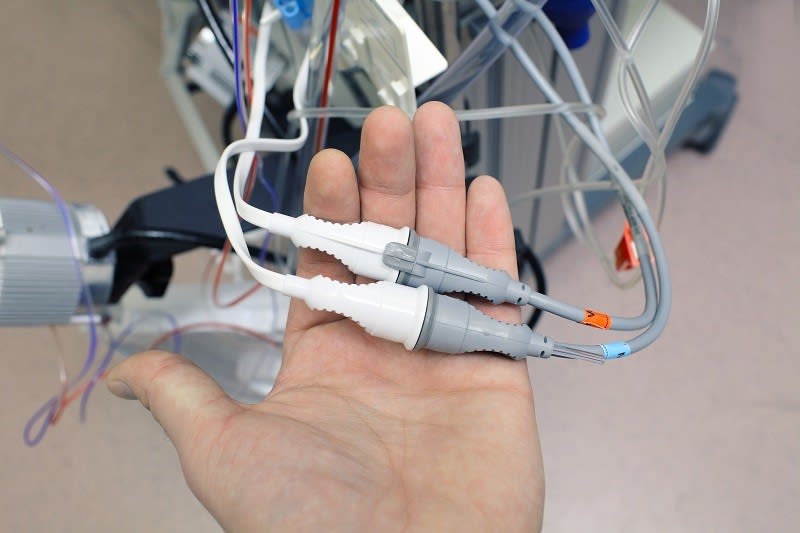Is Disposable All Bad?
Follow articleHow do you feel about this article? Help us to provide better content for you.
Thank you! Your feedback has been received.
There was a problem submitting your feedback, please try again later.
What do you think of this article?
The issue of single-use plastics has become a hot topic, with good reason. The harm to the environment that is caused by discarded plastic is well documented, and we are being encouraged to re-use our existing plastic products. However, the challenge of re-using plastic components is not a new one in the medical industry.
Medical Connectors
In the world of interconnect, medical connectors have a very particular role to play. Connectors provide the lifeline between patients and equipment, and need to function with a very high degree of reliability because a life may depend on their performance. However, there is a problem that is thrown up by the medical industry. At its heart lies the issues of reliability and patient safety.
Keep It Clean
One of the key requirements of any medical equipment is the control of contamination. Instruments are designed to be cleaned and sterilised before each use to ensure the wellbeing of the patient. One of the most popular techniques used to sterilise medical equipment is steam. Medical instruments are placed in a device called an autoclave, which uses pressurised saturated steam to kill any bacteria or other biohazards, thereby making the instrument clean for re-use.
An autoclave in action
There are alternatives to steam sterilisation, especially in situations where instruments might be damaged by excessive heat. Chemicals or radiation can be used to provide the necessary level of sterilisation for use with surgical instruments. However, both methods have their hazards. In order to sterilise equipment for use in surgery, the chemicals themselves can be harsh and even dangerous. Radiation sterilisation presents other hazards, as the types of radiation that are used – whether ultraviolet light, X-rays or gamma rays – are potentially dangerous if enough care is not taken.
Sterilisation techniques also have an impact on the instruments themselves. The materials from which the instruments and connectors are made must also be able to withstand the process whilst not impacting the reliability of the device.
Many medical instruments are designed to ensure that the patient cannot touch a conductive element. In the event of an internal fault, it is vital that the patient is safe from any metal part that is accidentally connected to an electrical circuit. Therefore, many medical connectors use plastic outer shells rather than metal to provide the necessary isolation for the patient.
Choose Your Material
Therefore, plastic materials chosen for use in medical connectors must be chosen with care. They must provide mechanical strength and robustness, whilst also offering chemical stability to resist repeated sterilisation. There are several materials that provide the necessary characteristics for medical connectors, and all have been used at different times.
The Operating Theatre
Polyether ether ketone (PEEK) is a hard engineering plastic that offers excellent resistance to chemicals, temperature and radiation. A similar material with slightly lower performance is Polyetherimide (PEI) which is often used in medical applications under the name Ultem. The problem is that neither of these nor the other plastic materials used in medical connectors are cheap. These are high-performance polymers, and they have the price tag to match.
So why not manufacture single-use connectors from cheaper materials, materials that do not need to survive the rigours of repeated sterilisation?
Alongside mechanical and chemical reliability, medical connectors must also deliver excellent electrical performance. Some sensors or monitoring equipment are used to detect minute analogue signals, and the electrical circuits that carry these signals must offer the lowest electrical resistance. This means that the design of the electrical contacts within the connector is just as important as the materials from which the connector is made. Many medical connectors use turned or machined contacts in preference to the lower cost stamped and formed design due to their long term reliability. They are also plated with a generous layer of gold to provide the best possible electrical and mechanical performance. Therefore, regardless of whether the connector is re-usable or disposable, the costs associated with the rest of the design can still be high.
Made For Medical
Several manufacturers offer connectors that are designed specifically for patient applications. A good example is the REDEL 1P family of plastic connectors from LEMO, which use their famous push-pull locking system, making these connectors secure and yet simple to use. The machined contacts are similar to the traditional LEMO metal connectors and can perform thousands of mating cycles. The plastic shell is manufactured from either PEI or PSU (Polysulfone), both ideal for repeated sterilisation. There is even a disposable version, with a cut-down housing but still the same high-quality materials for reliability in the medical environment.
As consumers, we are being asked now more than ever to be aware of how plastic is being used and re-used. This is equally true of the medical industry, where both manufacturers and professionals need to balance the need for safety and cleanliness with the cost implications of disposable instruments. Selecting the correct material for your products has a huge effect on their performance, a lesson which goes beyond the medical sphere. Choose poorly, and your costs will increase and your reliability will suffer. Choose wisely, and your customers will reward you with their loyalty.




